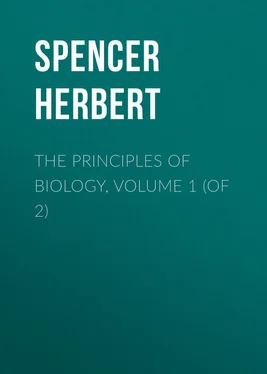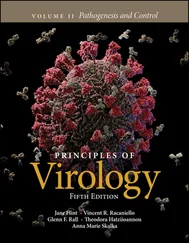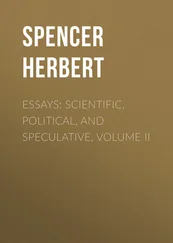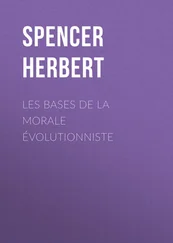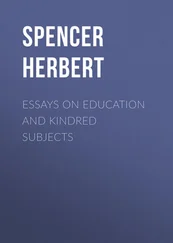Herbert Spencer - The Principles of Biology, Volume 1 (of 2)
Здесь есть возможность читать онлайн «Herbert Spencer - The Principles of Biology, Volume 1 (of 2)» — ознакомительный отрывок электронной книги совершенно бесплатно, а после прочтения отрывка купить полную версию. В некоторых случаях можно слушать аудио, скачать через торрент в формате fb2 и присутствует краткое содержание. Жанр: Философия, foreign_antique, foreign_prose, на английском языке. Описание произведения, (предисловие) а так же отзывы посетителей доступны на портале библиотеки ЛибКат.
- Название:The Principles of Biology, Volume 1 (of 2)
- Автор:
- Жанр:
- Год:неизвестен
- ISBN:нет данных
- Рейтинг книги:3 / 5. Голосов: 1
-
Избранное:Добавить в избранное
- Отзывы:
-
Ваша оценка:
- 60
- 1
- 2
- 3
- 4
- 5
The Principles of Biology, Volume 1 (of 2): краткое содержание, описание и аннотация
Предлагаем к чтению аннотацию, описание, краткое содержание или предисловие (зависит от того, что написал сам автор книги «The Principles of Biology, Volume 1 (of 2)»). Если вы не нашли необходимую информацию о книге — напишите в комментариях, мы постараемся отыскать её.
The Principles of Biology, Volume 1 (of 2) — читать онлайн ознакомительный отрывок
Ниже представлен текст книги, разбитый по страницам. Система сохранения места последней прочитанной страницы, позволяет с удобством читать онлайн бесплатно книгу «The Principles of Biology, Volume 1 (of 2)», без необходимости каждый раз заново искать на чём Вы остановились. Поставьте закладку, и сможете в любой момент перейти на страницу, на которой закончили чтение.
Интервал:
Закладка:
Further, we have to contemplate organic tissue, formed of mingled colloids in both soluble and insoluble states, as permeated throughout by crystalloids. Some of these crystalloids, as oxygen, 5water, and perhaps certain salts, are agents of decomposition; some, as the saccharine and fatty matters, are probably materials for decomposition; and some, as carbonic acid, water, urea, kreatine, and kreatinine, are products of decomposition. Into the mass of mingled colloids, mostly insoluble and where soluble of very low molecular mobility or diffusive power, we have constantly passing, crystalloids of high molecular mobility or diffusive power, that are capable of decomposing these complex colloids, or of facilitating decompositions otherwise caused; and from these complex colloids, when decomposed, there result other crystalloids (the two chief ones extremely simple and mobile, and the rest comparatively so) which diffuse away as rapidly as they are formed.
And now we may clearly see the necessity for that peculiar composition which we find in organic matter. On the one hand, were it not for the extreme molecular mobility possessed by three out of the four of its chief elements; and were it not for the consequently high molecular mobility of their simpler compounds; there could not be this quick escape of the waste products of organic action; and there could not be that continuously active change of matter which vitality implies. On the other hand, were it not for the union of these extremely mobile elements into immensely complex compounds, having relatively vast molecules which are made comparatively immobile by their inertia, there could not result that mechanical fixity which prevents the components of living tissue from diffusing away along with the effete matters produced by decomposition.
§ 8 a . Let us not omit here to note the ways in which the genesis of these traits distinguishing organic matter conforms to the laws of evolution as expressed in its general formula.
In pursuance of the belief now widely entertained by chemists that the so-called elements are not elements, but are composed of simpler matters and probably of one ultimate form of matter (for which the name "protyle" has been suggested by Sir W. Crookes), it is to be concluded that the formation of the elements, in common with the formation of all those compounds of them which Nature presents, took place in the course of Cosmic Evolution. Various reasons for this inference the reader will find set forth in the Addenda to an essay on "The Nebular Hypothesis" (see Essays , vol. I, p. 155). On tracing out the process of compounding and re-compounding by which, hypothetically, the elements themselves and afterwards their compounds and re-compounds have arisen, certain cardinal facts become manifest.
1. Considered as masses, the units of the elements are the smallest, though larger than the units of the primordial matter. Later than these, since they are composed of them, and since they cannot exist at temperatures so high as those at which the elements can exist, come the diatomic compounds – oxides, chlorides, and the rest – necessarily larger in their molecules. Above these in massiveness come the molecules of the multitudinous salts and kindred bodies. When associated, as these commonly are, with molecules of water, there again results in each case increase of mass; and unable as they are to bear such high temperatures, these molecules are necessarily later in origin than those of the anhydrous diatomic compounds. Within the general class of triatomic compounds, more composite still, come the carbohydrates, which, being able to unite in multiples, form still larger molecules than other triatomic compounds. Decomposing as they do at relatively low temperatures, these are still more recent in the course of chemical evolution; and with the genesis of them the way is prepared for the genesis of organic matter strictly so called. This includes the various forms of protein-substance, containing four chief elements with two minor ones, and having relatively vast molecules. Unstable as these are in presence of heat and surrounding affinities, they became possible only at a late stage in the genesis of the Earth. Here, then, in that chemical evolution which preceded the evolution of life, we see displayed that process of integration which is the primary trait of evolution at large.
2. Along with increasing integration has gone progress in heterogeneity. The elements, regarding them as compound, are severally more heterogeneous than "protyle." Diatomic molecules are more heterogeneous than these elements; triatomic more heterogeneous than diatomic; and the molecules containing four elements more heterogeneous than those containing three: the most heterogeneous of them being the proteids, which contain two other elements. The hydrated forms of all these compounds are more heterogeneous than are the anhydrous forms. And most heterogeneous of all are the molecules which, besides containing three, four, or more elements, also exhibit the isomerism and polymerism which imply unions in multiples.
3. This formation of molecules more and more heterogeneous during terrestrial evolution, has been accompanied by increasing heterogeneity in the aggregate of compounds of each kind, as well as an increasing number of kinds; and this increasing heterogeneity is exemplified in an extreme degree in the compounds, non-nitrogenous and nitrogenous, out of which organisms are built. So that the classes, orders, genera, and species of chemical substances, gradually increasing as the Earth has assumed its present form, increased in a transcendent degree during that stage which preceded the origin of life.
§ 9. Returning now from these partially-parenthetic observations, and summing up the contents of the preceding pages, we have to remark that in the substances of which organisms are composed, the conditions necessary to that re-distribution of Matter and Motion which constitutes Evolution, are fulfilled in a far higher degree than at first appears.
The mutual affinities of the chief organic elements are not active within the limits of those temperatures at which organic actions take place; and one of these elements is especially characterized by its chemical indifference. The compounds formed by these elements in ascending grades of complexity, become progressively less stable. And those most complex compounds into which all these four elements enter, together with small proportions of two other elements which very readily oxidize, have an instability so great that decomposition ensues under ordinary atmospheric conditions.
Among these elements out of which living bodies are built, there is an unusual tendency to unite in multiples; and so to form groups of products which have the same chemical elements in the same proportions, but, differing in their modes of aggregation, possess different properties. This prevalence among them of isomerism and polymerism, shows, in another way, the special fitness of organic substances for undergoing re-distributions of their components.
In those most complex compounds that are instrumental to vital actions, there exists a kind and degree of molecular mobility which constitutes the plastic quality fitting them for organization. Instead of the extreme molecular mobility possessed by three out of the four organic elements in their separate states – instead of the diminished, but still great, molecular mobility possessed by their simpler combinations, the gaseous and liquid characters of which unfit them for showing to any extent the process of Evolution – instead of the physical properties of their less simple combinations, which, when not made unduly mobile by heat, assume the unduly rigid form of crystals; we have in these colloids, of which organisms are mainly composed, just the required compromise between fluidity and solidity. They cannot be reduced to the unduly mobile conditions of liquid and gas; and yet they do not assume the unduly fixed condition usually characterizing solids. The absence of power to unite together in polar arrangement, leaves their molecules with a certain freedom of relative movement, which makes them sensitive to small forces, and produces plasticity in the aggregates composed of them.
Читать дальшеИнтервал:
Закладка:
Похожие книги на «The Principles of Biology, Volume 1 (of 2)»
Представляем Вашему вниманию похожие книги на «The Principles of Biology, Volume 1 (of 2)» списком для выбора. Мы отобрали схожую по названию и смыслу литературу в надежде предоставить читателям больше вариантов отыскать новые, интересные, ещё непрочитанные произведения.
Обсуждение, отзывы о книге «The Principles of Biology, Volume 1 (of 2)» и просто собственные мнения читателей. Оставьте ваши комментарии, напишите, что Вы думаете о произведении, его смысле или главных героях. Укажите что конкретно понравилось, а что нет, и почему Вы так считаете.
